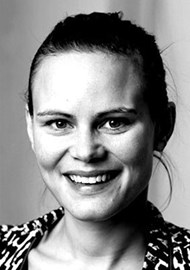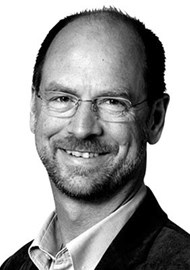In the field of hearing care, there is increasing focus on ensuring patient autonomy and choice. Greater participation in decision making is supposed to result in better patient satisfaction. A study conducted in ENT and audiology clinics paradoxically suggests that too much focus on the patient’s autonomy may result in less focus on the patient’s perspective, needs and wishes.
Patients with chronic conditions are not cured, but must live with their conditions. This makes it crucial to educate and involve patients in their treatment. Thus, we believe that the intent to ensure the patient has more information and choice may sometimes stand in the way of a comprehensive patient-centredness. We suggest viewing this problem as a matter of two differing rationales in clinical practice; the logic of choice and the logic of care. Drawing on observations of 41 clinical hearing care encounters in three Danish and two American ENT and / or audiology clinics, we aim to make the case for an approach based on the logic of care.
Two rationales in medical practice
Two dominant rationales have been identified by Professor Annemarie Mol [1].
The logic of choice
- Patients deserve to be heard and respected
- Patients have the right to choose for themselves
- Clinicians provide the facts, then patients form their own opinion
- The moment of choice is pivotal for subsequent course of treatment.
The logic of care
- The most important patient activity is not choice, but taking part in the care process
- Treatment process is interactive and open-ended, and there is not one singular moment in which a treatment is left in the hands of the patient
- Successful care is a collaboration, involving medical knowledge and the patient’s experience
- Multiple solutions are brought into play as necessary.
The clinical encounter
To see how the two rationales apply to medical hearing care, we will go over some findings from our study and explore: 1) what makes hearing loss problematic, 2) the explanation of the audiogram, 3) the solutions brought into play.
The problem of hearing loss
One clinician systematically asked his patient: “Do you turn up the TV louder? Can you hear the phone ringing? Do you have difficulty talking on the phone? Can you talk in restaurants?” This was followed by a hearing test, then the explaining of the audiogram and a conclusion: “You could use hearing aids if you feel troubled by your problems”. The doctor here acts in accordance with a logic of choice, and gives the patient autonomy to choose. However, he only includes fragments of the patient’s experience filtered through a scheme of predefined situations.
With the intent of ensuring the patient’s autonomy, the patient is addressed as a rational observer, who is able to report on symptoms and assess the consequences of hearing impairment. Meanwhile, the patient is actually dealing with a complex and continuously changing biopsychosocial problem [2]. Thus the logic of choice may hinder the clinician in taking a more holistic approach to the patient’s hearing problems.
By contrast, an approach based on the logic of care acknowledges that recognising a hearing problem can be a long and bewildering process. This processual approach addresses the complexity of communication loss as a social problem.
Explaining the audiogram
Most clinical interactions recorded in our study involved an explanation of the audiogram. In one consultation, the patient asked the clinician to move from information to advice: “What do you think? Would it be natural for me to get hearing aids?” This illustrates the kind of problem that may come with the logic of choice; the patient is facing an overwhelming amount of unfamiliar information [3], and asks for advice rather than choice.
“Recognising a hearing problem can be a long and bewildering process. The processual approach addresses the complexity of communication loss as a social problem.”
In a contrasting example illustrating the logic of care, another clinician walked her patient through a normal day: “When you wake up, what do you do…” As they went over everyday activities they also explored what the patient perceived as normal or extraordinary activities and when a hearing problem would actually bother him or his family. Thus they figured out when the hearing impairment caused problems for the patient as well as for communication partners, and how these problems were perceived and handled.
In the logic of care, the patient’s perspective is not only an instrument for mapping out facts about audibility and motivation to wear an aid. It is also an important source of knowledge for reaching an understanding of the hearing problem as it emerges in the context of everyday life.
One solution or many
The focus on choice tends to draw attention to just one solution, as opposed to a combination of solutions. In one consultation the clinician prepared her patient during the physical examination, telling her that “you must be ready to make the hearing aid a part of you, otherwise it will not help you”. For this clinician, the good treatment outcome is predefined as a compliant patient who wears a hearing aid so much that it becomes a part of her. No other solutions were brought up.
In the logic of care the goal for treatment is not set prior to the care process but evolves with it. In another clinic, we observed the patient and audiologist work together in this way. They talked about not being able to hear the TV and having difficulty talking during a dinner party when there is music in the background. But the conversation was not only a matter of mapping out hearing problems. It was about experimenting with possible solutions. The clinician agreed that voices on TV are hard to hear and recommended a subtitle service. As for the dinner parties, she would make sure that the patient felt okay about asking other people to turn down the music. She pointed out that even with a hearing aid, some situations would remain difficult. Instead of simply providing a technological intervention, she was supporting the patient with a multiplicity of solutions.
Our study suggests that excessive focus on patient choice and pre-defined treatment goals may stand in the way of a truly patient-centred approach.
References
1. Mol A. The Logic of Care. Health and the problem of patient choice. New York, USA; Routledge; 2008.
2. Engelund G. Time for hearing. Recognizing process for the individual. PhD Thesis, University of Copenhagen, Denmark; 2006.
3. Von Hapsburg D, Tjørnhøj-Thomsen T. The Encounter Model and Audiological Clinical Encounters. Seminars in Hearing 2012;33(1): 24-34.
4. Scarinci N, Meyer C, Hickson L, Grohn B. Family-centred care in adult hearing rehabilitation: What do audiologists think about involving family members?
http://www.baaudiology.org/files/9513/8598/0514/
R_08_Nerina_Scarinci_-_Family
-Centred_Care_in_Adult_Hearing_Rehabilitation.pdf
Last accessed January 2015.
5. Thorén E, Öberg M, Wänström G, Andersson G, Lunner T. A randomized controlled trial evaluating the effects of online rehabilitative intervention for adult hearing-aid users. Int J Audiol 2014;53:452-61.
SUMMARY: IMPLICATIONS FOR CLINICAL PRACTICE
The following practices can strengthen the logic of care in clinical interactions:
-
Replace self-report with day-in-a-life: Instead of asking all patients about the same situations, go over an ordinary day in the patient’s life by asking: What do you do in the morning / day / evening? Who are you with? What kinds of problems occur? What do you think and feel about it, and how do you handle it?
-
Include relatives: Encourage the patient to bring a family member or friend. It will give insight into the impact of the hearing loss on social relations, and inform relatives about how they may be of help. This is already common practice for some audiologists, and the involvement of family members in hearing rehabilitation is associated with improved outcomes [4].
-
Try out different solutions: Audiological rehabilitation is a process of adaptation to both the hearing loss and hearing aids, which makes it important to supplement the hearing-aid fitting with other solutions, most importantly communication techniques [5].





